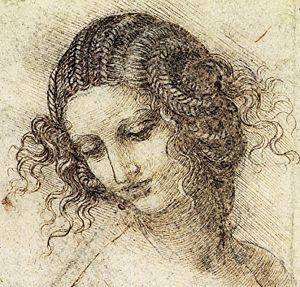 Image via Wikipedia
Image via Wikipedia
In looking over the reviews of the commentary by Ben Witherington on the book of Revelation. I noticed one reviewer complained that he never told which meaning the original readers and writer would have given an image in the book. I'm now about half way through his book and haven't found this to be a problem, but it does raise for me an important point about reading metaphoric literature of all kinds.
That's the fact that often an image can have more than one meaning and the author intended that multiple layer of meaning. It gives a piece much more depth to have this multi-level approach. To look for the one right meaning is to miss the point.
I can remember studying Yeats' "Leda and the Swan" and having a teacher walk me through those mutliple meanings that both overlapped and meshed together.
A sudden blow: the great wings beating still
Above the staggering girl, her thighs caressed
By the dark webs, her nape caught in his bill,
He holds her helpless breast upon his breast.
How can those terrified vague fingers push
The feathered glory from her loosening thighs?
And how can body, laid in that white rush,
But feel the strange heart beating where it lies?
A shudder in the loins engenders there
The broken wall, the burning roof and tower
And Agamemnon dead.
Being so caught up,
So mastered by the brute blood of the air,
Did she put on his knowledge with his power
Before the indifferent beak could let her drop?
This poem has at least four such levels, maybe more. Certainly Yeats contrived to have them there and to interlock them to allow the reader to get more than just the first reading of such a poem would give.
First, there's the basic story, Leda, a girl, is raped by a swan. To embellish that more and explain the lines about Agamemnon and the burning wall, we find the second layer, that of Greek mythology. The swan is Zeus and the children of this mating are Helen of Troy and her sister Clytemnestra, who marries and later kills Agamemnon.
But Yeats wasn't willing to stop there. He had is own view of history as a cycle of rising and falling events. For him the fall of Troy was the fall of Greek culture and signaled the rise of a later culture, Christanity. For him this moment is the beginning of modern history.1
Yet even all this doesn't quite explain that last lines, "Did she put on his knowledge with his power, Before the indifferent beak could let her drop?" Which takes us to yet a fourth level of meaning. That of the creative person who struggles to capture that one flash of creation that comes from a greater and higher force before that moment and that creativity are gone.2
This adds depth and meaning to the poem and to try to decide which of the four is right just wouldn't be, well, right.
![Reblog this post [with Zemanta]](http://img.zemanta.com/reblog_a.png?x-id=91b7f0d3-231e-492e-9a7b-aa7ef6688929)



0 comments:
Post a Comment